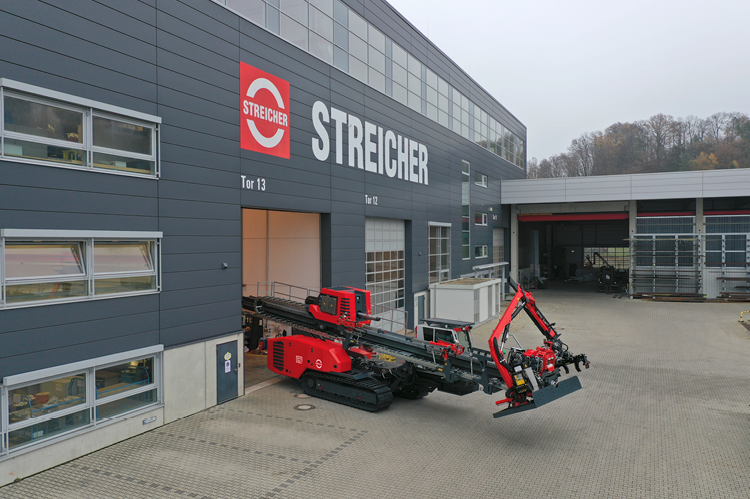STREICHER launches fully-electric driven HDD rig - An intelligent and eco-sensitive solution to decarbonize the job-site footprint

In recent years, the issues of the environmental protection and nature conservation - and thus the question of regenerative energy sources - have become particularly important. STREICHER also holds the objective to reduce CO2 emissions in the future in order to reduce the ecological footprint. Therefore, the group has made it a primary objective to concentrate on the development and manufacturing of products that are powered electrically, with hydrogen or with a fuel cell, among others.
These efforts are combined under a separate, appropriate label called ecotec. In line with the goal of decarbonisation, the ecotec label brings together innovative technologies with future-focused trends and essentially summarises the issues of resource conservation, environment protection, energy efficiency and optimisation of the entire energy cycle.
The experience and expertise in large scale pipeline projects with different construction methods have led to a custom-tailored solution for a series of fully-electric driven HDD rigs – which have been employed for internal operations and external customer use alike. Whereas the regular HDD-drive technology is based on a Diesel-driven hydraulic system, the new power supply system for the electrified drilling rig has been entirely redesigned. The system is, in accordance with STREICHER’s electrical design concept, constructed as electrical in its entirety: The drives – spindle, carriage (thrust / pullback), mud pump and crawler tracks are run by electric motors.
The following article shows the numerous advantages of the HDD- E-rig – e.g. reduction of CO2 emissions and noise, intuitive operating concept, safety advantages.
